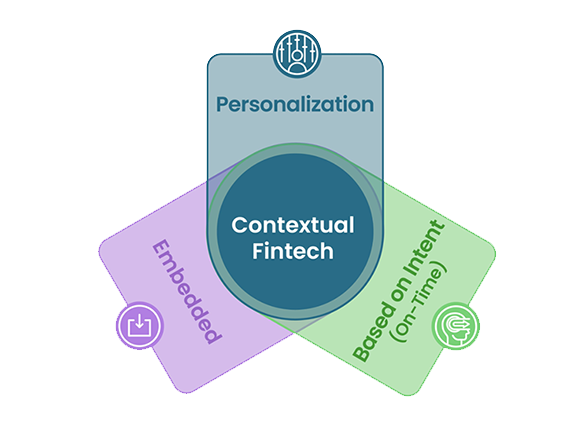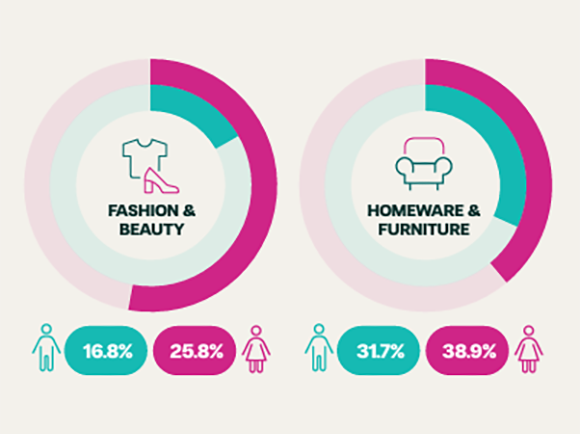Buy Now, Pay Later and Furniture: The benefits for merchants and lenders

Buying something now and paying for it later is nothing new. In fact, financing has been around for centuries. But did you know one of the first modern applications of Buy Now, Pay Later (BNPL) and retail finance was to make furniture more affordable?
For many of us (myself included), our first exposure to the concept of buying now and paying later was through adverts for furniture companies like this one.
Buy Now, Pay Later goes hand-in-hand with furniture sales, as its greatest benefit is to break up the cost of a large purchase into instalments. There are significant benefits to merchants and lenders, too, where BNPL can boost sales, increase the size of average order values and reduce rates of cart abandonment.
In this article, we explore the benefits of offering Buy Now, Pay Later (BNPL) and retail finance for furniture for both merchants and lenders. First, let’s look at the difference between these two terms.
Retail finance vs Buy Now, Pay Later (BNPL)
Buy Now, Pay Later (BNPL) is often used as a catch all term to describe the retail finance industry. However, BNPL is just one version of retail finance. There are a number of retail finance products available to consumers at the point of sale.
Buy Now, Pay Later
Buy Now, Pay Later (BNPL) is a form of credit offered at the point of sale. With BNPL, consumers can apply for a small loan at a retailer’s checkout, either online or in-store.
When it comes to furniture, the cost of a new sofa, bed or wardrobe can be split into three or four equal instalments, which must be repaid within 12 months, usually on a weekly or monthly basis. There are no extra fees to the customer, unless a payment is missed.
Buy Now Pay Later (BNPL) loans are typically £250 or less. The small value of the loans means it is possible to use Buy Now, Pay Later to pay for furniture with no hard credit check.
Consumers with bad credit may be drawn to using Buy Now, Pay Later, but this can cause issues if the consumer cannot afford to pay the instalments on time.
BNPL is not directly regulated, which means consumers are not as protected as they would be using another form of payment, such as a credit card. BNPL users may be vulnerable if something were to go wrong with the purchase.
Using Buy Now, Pay Later to pay for furniture should only be done if the consumer is sure they can afford to pay for the item. Merchants and lenders should therefore consider the implications of offering Buy Now, Pay Later. The last thing anyone wants is to see customers fall into debt.
(See: BNPL regulation: six likely changes for the sector)
As BNPL is only available for smaller ticket items, paying for more expensive items like furniture may not always be possible using Buy Now, Pay Later. But there are other ways to pay in instalments for furniture.
Short-term Interest-free Credit (STIFC)
Short-term interest-free credit (STIFC) products can help to break up the cost of larger furniture purchases. STIFC is similar to BNPL, in that it allows customers to pay in instalments for furniture but, unlike BNPL, loans can reach £25,000 in value and can be spread over periods up to three years.
Hard-credit checks are not always required, but are much more common with STIFC purchases.
Interest-bearing credit
There are also interest-bearing retail finance credit products. These are similar to STIFC products, but the repayment period can be much longer. As a result, annual percentage rate interest (APR) is charged by lenders.
Pay in 30
Some BNPL providers also offer a ‘Pay in 30’ option. This allows consumers to delay the payment of an item for 30 days, at which point the full amount is due.
Benefits of retail finance (Buy Now, Pay Later) for furniture merchants
Retail finance allows merchants to offer credit at the point of sale, despite not being a credit provider. Credit is offered by a third-party lender, who embeds their payment method at the merchant’s checkout.
This can provide a number of benefits to merchants:
Increased average order value (AOV)
Retail finance products, like Buy Now, Pay Later and Short-term Interest-free Credit, can reduce the upfront cost of a sofa, making it easier for a customer to manage their payments.
This can offer huge benefits to customers. It allows them to make their purchase and take delivery of their furniture right away. A customer who urgently needs a new bed won’t need to save for several months to afford their purchase.
This also protects the customer from price rises while they are saving. This can be useful if the customer wishes to make a purchase during a sale, or if they believe the cost of the item may go up while they are saving.
Better still, the customer may be tempted to add more items to their basket. What started out as a sofa purchase could lead to the customer adding upholstery, an extended warranty and other items.
Ultimately, with retail finance, consumers have increased flexibility when it comes to managing their finances. This gives them the freedom to make larger purchases, which leads to increased Average Order Values (AOV) for merchants. It’s a win-win.
Access to new customers
Retail finance is essential for merchants who want to remain competitive. 50% of Gen Z and 54% of millennials reportedly use BNPL products, and many more consumers actively seek out Buy Now, Pay Later and retail finance at a merchant’s checkout. Those who don’t see finance options at the checkout may be tempted to shop elsewhere.
Offering BNPL is therefore not only a great way to increase AOVs, it could make or break a sale.
Improved cash flow
Because customers take their loan from a third-party lender, the merchant gets paid in-full at the time of purchase. This means instant access to funds. There is very little risk to the merchant, and they don’t need to worry about the cost of recovering debt.
Higher customer loyalty and satisfaction
Retail finance vastly improves the customer’s checkout experience – the most crucial stage in the purchase journey. Access to credit is available exactly when it is needed with minimal friction. This reflects positively on your business, boosting loyalty and overall satisfaction.
Benefits of retail finance (Buy Now, Pay Later) for lenders
Retail finance lenders are long-established in the world of furniture. With its higher price points and relatively safe fundamentals, furniture sales are considered relatively safe and easy to lend against. And there are many other benefits for lenders besides. Some of these include:
Increased revenue
Retail finance is a great way for lenders to boost their revenues.
With BNPL, STIFC and Pay in 30 products, lenders charge merchants between 2% and 8% for each retail finance transaction, plus initial set-up fees and monthly licensing costs. Customers are only charged if a payment is missed, but the majority of retail finance customers manage their repayments with little to no fuss.
For interest-bearing credit, lenders charge the customer Annual Percentage Rate interest. The amount of interest charged will vary from each lender, but fees from Divido’s merchant list are around 10.9%.
In either case, retail finance is an opportunity to expand a lender’s portfolio and grow their business.
Customer acquisition
In the same way that merchants gain access to a new pool of customers, lenders can use retail finance and BNPL as a customer acquisition tool. BNPL, for example, is popular among younger consumers, for whom credit cards are becoming increasingly unpopular.
This presents an opportunity for lenders. BNPL and retail finance can be used to build relationships with younger, harder-to-reach groups. Lenders can then re-market to these consumers. What starts as a small loan for a wardrobe could lead to that customer taking out a mortgage with the same lender a few years down the line.
The bottom line: is retail finance (BNPL) good for furniture merchants and lenders?
Absolutely. There are many major benefits to offering retail finance for furniture purchases. As consumers increasingly start to look for financing options to fund their larger purchases, merchants and lenders should jump at the opportunity to fill this gap in the market.
However, it’s important to take a careful and considered before implementing a retail finance programme. Furniture merchants must take the time to research partners, looking particularly for lenders who take their duty of care to customers seriously.
With regulation of the BNPL market arriving in 2023, it’s also worth asking your lenders whether they are compliant. Partnering with a non-compliant lender may lead to your customers falling into debt, which could cause reputational damage.
Ultimately, retail finance will prove vital to the success of furniture retailers. If you haven’t already, now is the time to start to implement Buy Now, Pay Later for furniture sales.
You might also
be interested in
Keen to know more?








